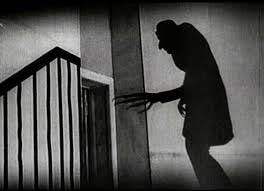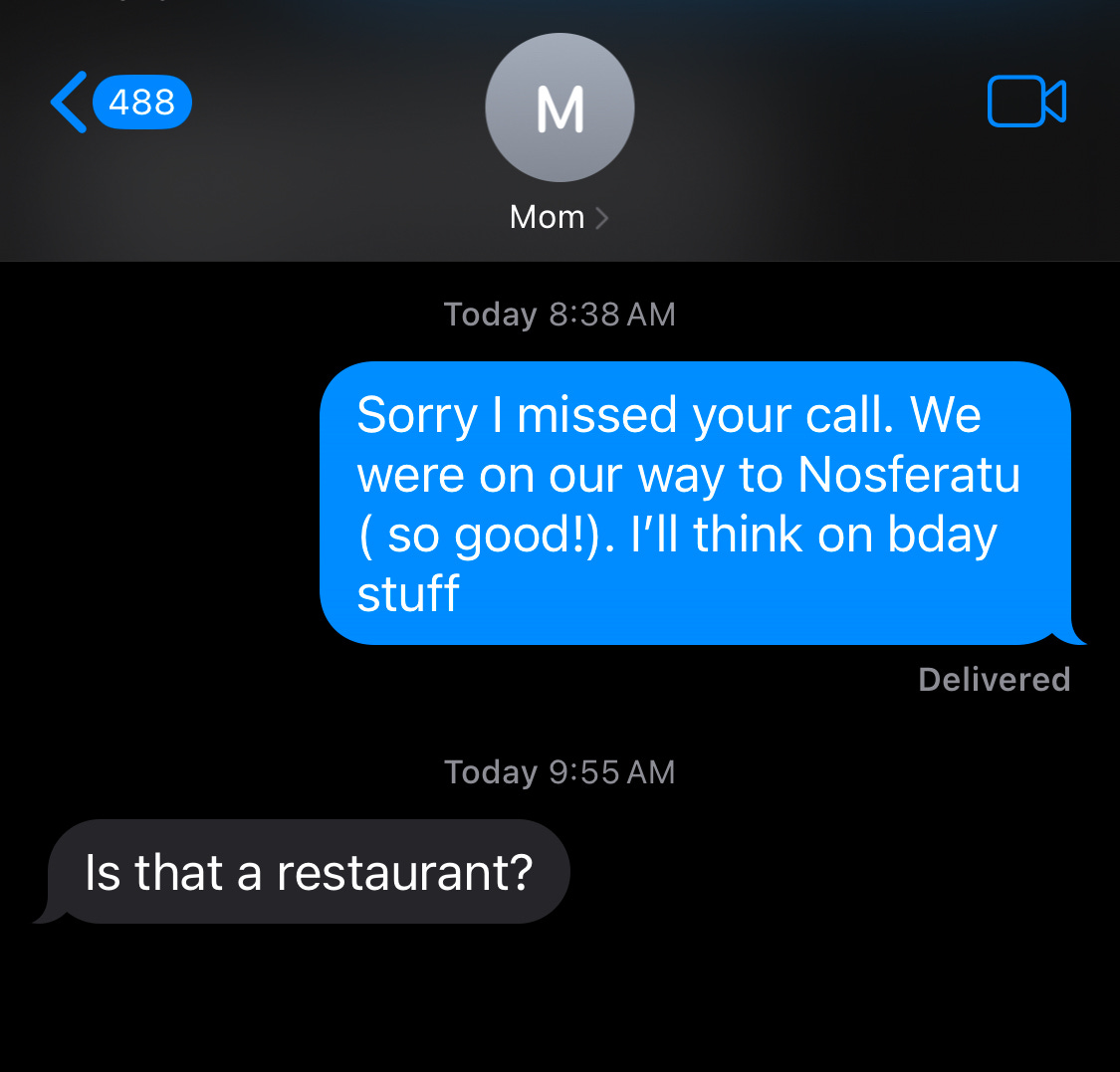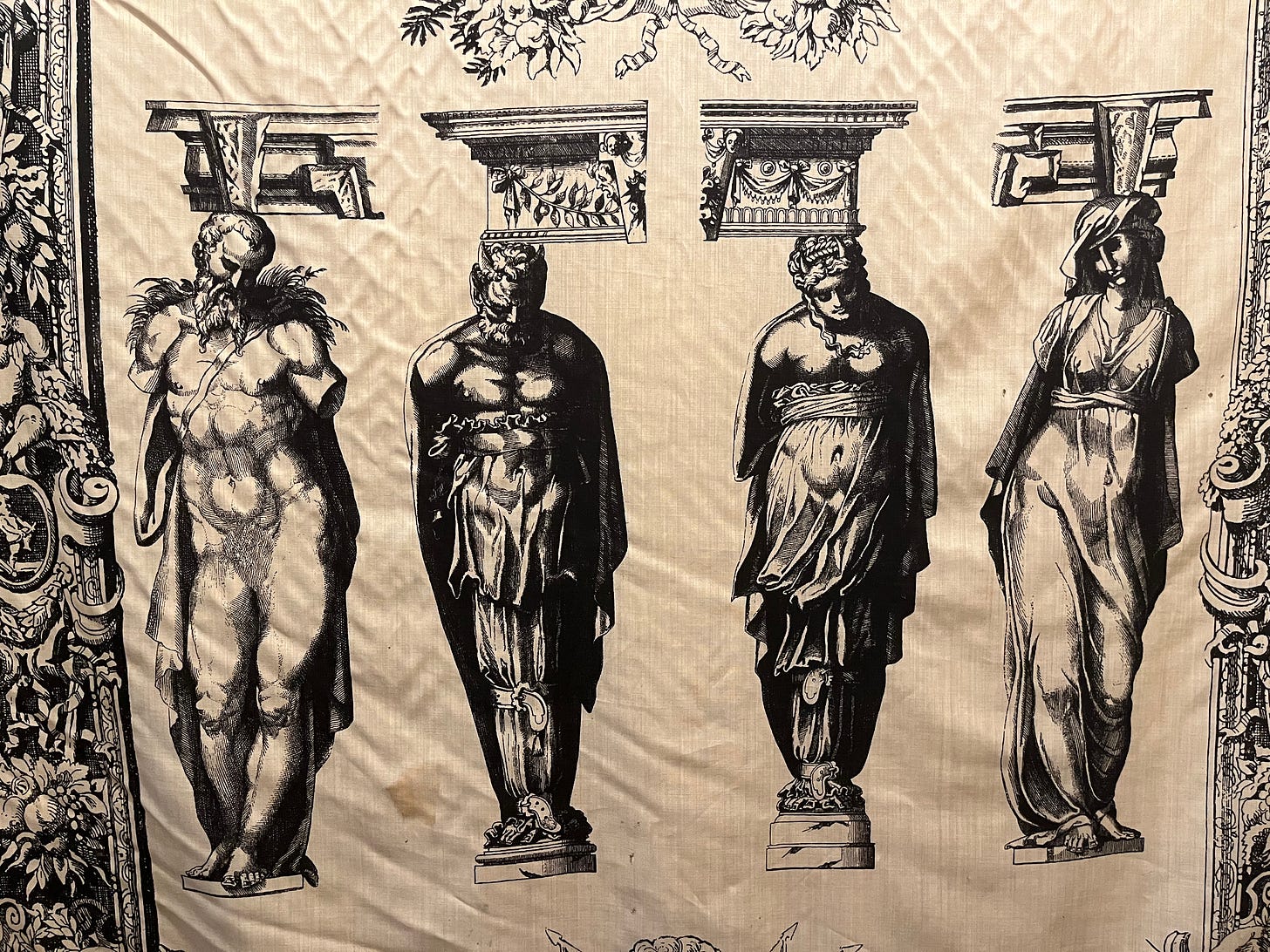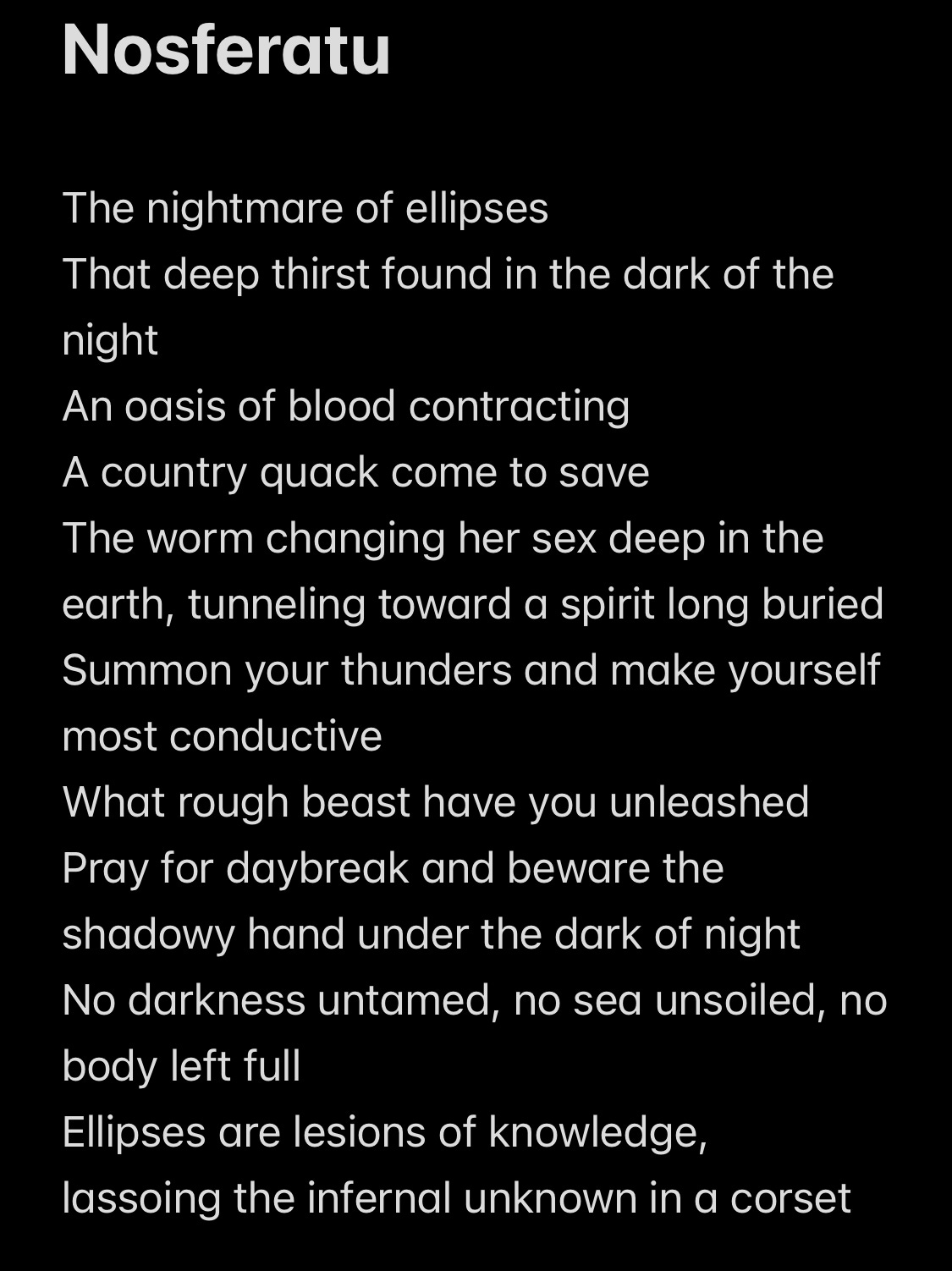In Nosferatu (2024), it does not take long for time to slip from our grasp. As soon as Thomas enters the orbit of Count Orlok (Nosferatu), the threshold between dreaming and waking dissolves. The night before Thomas reaches the castle, he witnesses a distant solution in the form of ritual sacrifice that appears to be just a dream until he sees fresh mud caked on his boot. Dazed, he journeys up the mountain on foot, his horse having fled along with the entire village. At a crossroads, a chariot of wolves awaits to whisk him inside the castle. In this montage, the camera, which has a habit of gently pressing forward, takes flight after nudging Thomas into the empty chariot. We see a drone’s view of the chariot from above and then the castle through Thomas’ eyes and finally we surge forward into the shadows of Count Orlok’s spired keep.
This is our first taste of the terror of ellipses. Ellipses can signal disjointed, schizophrenic thinking; fragments of thought stitched together by three dotted sutures. But the ellipses in Nosferatu adhere closer to its truer meaning: elision. Imagine a water slide with segments that are fully covered tunnels. As we are carried down, some parts are eclipsed in darkness and these, essentially, are ellipses. We do not switch tracks, but rather continue down the same path and are sometimes disoriented in the dark. In that momentary darkness, a menacing hand grips our spine, shaking loose our private nightmares and desires, before a shock of light corrects us.
…the ellipses are not unlike the thin break in film between frames. What occurs there is not separate from the film, but it does not belong to that world either…
The camera acts as a kind of double agent, simultaneously conveying unknowing ellipses and all-knowing omniscience, as it flits between Transylvania and a port city in 1830s Germany where Ellen, Thomas’ beloved wife, awaits his return.
The subtle maneuvering of this camera work enhanced so many aspects of the movie, but what will surely garner most attention is the fastidious set design, Bill Skarsgard’s indelible performance, and the delicious writing. While I was fully enraptured by the apocalyptic dialogue, taken especially by Skarsgard’s metronomic cadence, Celina was paying close attention to the stage design and effects. She came away with the impression that there was little to no CGI, save perhaps the shadowy hand reaching through the sleeping port city. It was unsurprising to learn that the director/writer Robert Eggers, who became famous for The Witch (2015) (perhaps my favorite horror of all-time), had a background in theater and set design before moving into film.
The Witch, another transportive film thanks to its assiduous historical accuracy, used similar fright tactics to ratchet up tension: arcane diction, booming voices rumbling low like distant thunder, ambient whispers. But unlike The Witch and so many horror movies, Nosferatu shows the monster from the beginning. Most horrors withhold the creature until the very end, placing all the burden of suspense on the moment of the big reveal, which may or may not deliver a worthy payoff. It is a tiresome ploy and too often what is revealed is a disappointing glimpse. (The great exception here is Barbarian (2022).) What’s more difficult, and brave, is to show the beast full frontal and build its menace.
Hulking yet hunched, Skarsgard as Nosferatu is decked out in a voluptuous fur coat, from which his spidery hands beckon, and a comically thick mustache. The best part of Skarsgard’s performance was his voice, which sounded like a heavy door knocker: steady, low, ominous, coming for you. He dragged you under his Old World spell, rolling his Rs with the same pleasure a professional con artist rolls a gold coin between his knuckles, until he gulps for air, rasping through a century-old esophagus. I held on to every word, my heart pumping blood in sync with his breathy incantation.
Dafoe was electric and comfortable in his role as quack professor come to save the day (he essentially plays this role the same as he did the mad doctor in Poor Things). Though a man of high learning, he was sure angels and demons watched over us, declaring at one point, “I’ve seen things that would make Isaac Newton crawl back into his mother’s womb!” Dafoe’s final scene, a true reverie of madness, made me want to purchase a rat door knocker for my apartment, to accompany a candle sconce and this terrifying flag in our entryway. We are slowly building a castle here in Crown Heights.
The film was near-perfect if it hadn’t made women and their bodies mere props in this tale of carnal desire. I do like how sexualized the feeding was depicted with Skarsgard undulating over his victims like a midnight wave, but overall the women were oversexualized, stripped of their agency, and depicted as hysterical, fussy, and/or meek.
Later that night, after the screening, a round of cards, and three slices of pizza, I was visited by an angel. On the last day of the year, I dreamed of my father and Alaska. I was to meet my brother in the wilds of Alaska, and my father was kindly trying to help me get there but of no real help. My brother was a day's hike ahead and our schedule allowed no delay, so my only option to catch up was to hike through the night — a terrifying prospect given the possibility of encountering a bear or some other beast of prey. I woke up to a tiny beast mewing, her great green eyes boring into me, ready to feed. I don’t often remember my dreams and this is the only one I can recall of my Dad since he passed — a final kindness in a cursed year. I stayed still trying to summon his vapors, reaching into the night mist, but the only other fragment I found was me and my brother trying to kill flying cockroaches.






